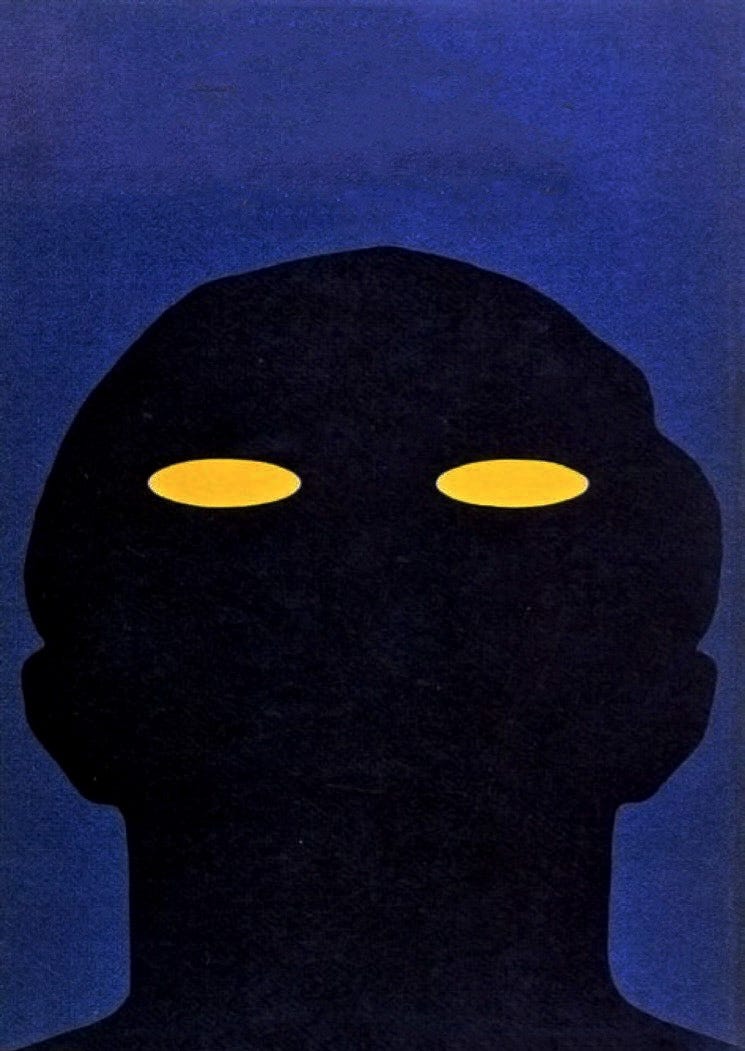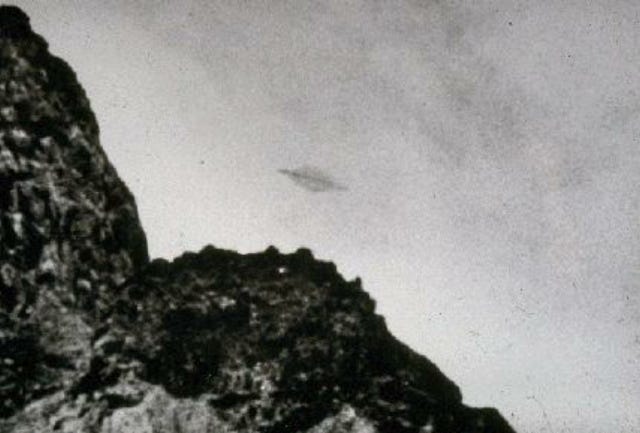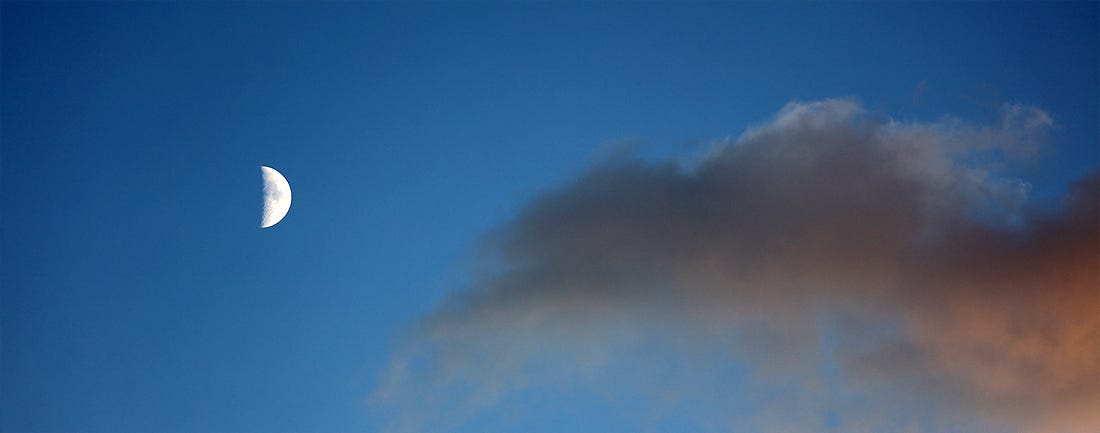Carl Jung on Flying Saucers
"A Modern Myth of Things Seen in the Skies”
Dr. Carl Gustav Jung, MD wrote about the UFO phenomenon from his unique perspective as a pioneering psychiatrist and founder of Analytical Psychology in “Flying Saucers: A Modern Myth of Things Seen in the Skies.”
The work was published in 1958, a period in which the world’s newspapers were full of UFO reports, including the spectacular sighting and photographs taken by the Brazilian Navy at Trindade Island, as well as soul-crushing geopolitical tension where powers wielding hydrogen bombs threatened the existence of humanity, if not all life on earth.
Dr. Jung defined the psyche — our minds and awareness as subjective individual human beings — as the totality of our psychological processes, both conscious and unconscious. He postulated the psyche has three main realms: the individual conscious mind, the individual unconscious mind, and the collective unconscious mind — a universal, inherited part of the unconscious mind that is accessed and shared by all humans.
From the Jungian Center for the Spiritual Sciences:
Jung on ‘Signs in the Skies’
Excerpt...
Jung saw UFOs as archetypal symbol carriers of the “gods,” a phenomenon that had become an “impressive legend” and “living myth.” By “myth” Jung did not mean “a false story,” which is how our culture often defines “myth.” To Jung myths were “original revelations of the preconscious psyche,” and carriers of great depth and vital meaning. So he put great store in UFOs. They were a very important feature of our time, a feature that certainly had psychological reality.
But did UFOs have physical reality? Perhaps because he recognized them as so important, this aspect of the UFO phenomenon bedeviled Jung, and he admitted that, because of the physical evidence—the photos and radar reports—UFOs could not be “disposed of” simply as psychological artifacts.
Carl Gustav Jung obtained his medical doctor degree from the University of Basel in 1900. He earned his PhD at the University of Zürich, where his dissertation focused on the psychology and pathology of occult phenomena.
Dr. Jeffrey J. Kripal on Jung and UAP
The Essentia Foundation provides more expert context on Dr. Jung’s views in an interview with Dr. Jeffrey J. Kripal, PhD, of Rice University and the Archives of the Impossible. Among his observation, Dr. Kripal said about Ufology, “It’s a rabbit hole inside a rabbit hole inside a rabbit hole. You cannot study the UFO, or as they call it today, UAP, without engaging the paranormal. It will hit you like a ton of bricks.”
Dr. Paul Bishop: Jung and UAP
Jungian analyst Laura London discussed Dr. Jung and his work with Oxford-educated Jung scholar Professor Paul Bishop, PhD, in detail. The discussion was webcast April 15, 2025, “Speaking of Jung: Episode 141.”
In the interview, Dr. Bishop observed: “There are numerous dark hints and remarks where (Jung) talks about how godlike the human being has become, to human beings’ detriment. And I think that the idea of those (atomic) bombs not only destroying the poor people onto whom they they are dropped, but also triggering something more broadly in what one would call the collective psyche — not in a mystical, but in a phenomenological sense. That's what makes Jung's essay so important.”
Dr. Jung said he had never seen a UFO, but several colleagues he knew had. Jung wrote that he read as much as he could about flying saucers, devouring newspaper accounts and “every book he could find on the subject.” He also corresponded with many of the authors who explored the subject, including Major Donald Keyhoe, a proponent of the idea that UFOs are visitors from outer space.
Dr. Jung reported a dream about a flying saucer. Then he analyzed what it meant.
The Psychology of UFOs – Carl Jung
Carl Jung: Memories, Dreams, Reflections
Excerpt...
Jung, in fact, had a dream of a UFO which he associates with the problem of the Self. He writes:
“In one dream, which I had in October 1958, I caught sight from my house of two lens-shaped metallically gleaming disks… They were two UFOs… Then another body came flying directly toward me. It was a perfectly circular lens… At a distance of four to five hundred yards it stood still for a moment, and then flew off. Immediately afterward, another came speeding through the air: a lens with a metallic extension which led to a box – a magic lantern. At a distance of sixty or seventy yards it stood still in the air, pointing straight at me. I awoke with a feeling of astonishment. Still half in the dream, the thought passed through my head: “We always think that the UFOs are projections of ours. Now it turns out that we are their projections. I am projected by the magic lantern as C.G. Jung. But who manipulates the apparatus?”
A Note on Translating German to English
A native of Switzerland, Dr. Jung wrote in German. Published originally in Zürich and Stüttgart in 1958, “Flying Saucers” is still in print today.
The work’s complete title, “Ein moderner Mythus: Von Dingen, die am Himmel gesehen werden,” was translated into “Flying Saucers: A Modern Myth of Things Seen in the Skies.”
Jung's title reads a bit differently in German than in English, however. Nouns, in German, are capitalized. In book titles, English capitalizes the “big words,” but German capitalizes only the first word and the nouns. So, word-for-word Jung’s tome would go: “A Modern Myth: Of Things, Which Have Been Seen in the Sky.”
Perhaps to boost English sales, “Things” became “Flying Saucer.” Per Oxford Dictionary, the etymology of “Thing”: “Old English þing, þyng, of Germanic origin; related to German Ding . Early senses included ‘meeting’ and ‘matter, concern’ as well as ‘inanimate object’.”
The sense of thing as “Inanimate object” seems apropos when it comes to the UFO phenomenon. In some reports, witnesses report the thing appeared as an artificial object, a machine. In others, witnesses report the experience gave them the impression that the phenomenon itself were a living being.
“Himmel,” the German word for “sky,” is also the German word for “heaven.” Dr. Jung grew up in a home where the concept was often discussed — his father was a pastor in the Swiss Reformed Church. As for UFOs, I think Dr. Jung considered them a manifestations of our inner worlds on the realm above earth in both senses of Himmel.
The illustration at the top of the page is the cover art for Dr. Jung’s Flying Saucers. The ideas conjured by the image, like the phenomenon it depicts, can be insightful and surreal, often simultaneously.





